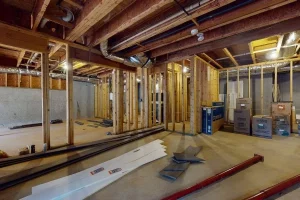Creating a productive writing space is crucial for writers, and addressing basement moisture issues is key to this endeavor. By implementing effective basement moisture control tips, one can ensure a comfortable and conducive atmosphere for creative pursuits. From identifying moisture sources to managing humidity with dehumidifiers and proper ventilation, these strategies are essential. Discover practical methods to prevent dampness, protect your equipment, and transform your basement into the ideal writing sanctuary for enhanced productivity and inspiration.
Key Takeaways
- Use a dehumidifier to maintain optimal moisture levels for a conducive writing environment.
- Seal any cracks or leaks to prevent water infiltration and potential damage.
- Ensure good ventilation to reduce humidity buildup in the basement.
- Regularly monitor humidity levels with hygrometers to address any fluctuations promptly.
- Implement targeted moisture control solutions to enhance productivity in the writing space.
Understanding Basement Moisture
Basement moisture is a common issue faced by many homeowners due to its potential to cause structural damage and promote mold growth. It is essential for writers to understand the implications of basement moisture on their writing space. Moisture can seep through walls and floors, leading to damp conditions that are conducive to mold. This can affect the air quality and overall comfort of the space, impacting productivity.

Identifying Common Causes
Understanding the root causes of excess moisture in below-ground spaces is essential for writers seeking to maintain a conducive environment for their creative pursuits. Common causes include poor ventilation, water leaks from plumbing, cracks in the foundation, and high humidity levels. Additionally, improper grading around the foundation and lack of waterproofing can contribute to moisture issues. Identifying these common causes is the first step in effective basement moisture control.
Implementing Effective Solutions
To effectively address moisture issues in below-ground writing spaces, writers can implement a range of targeted solutions aimed at controlling and preventing excess humidity.
- Install a Dehumidifier: Lower the moisture levels in the air to prevent dampness.
- Seal Cracks and Leaks: Keep water from seeping into the basement through cracks or gaps.
- Improve Ventilation: Enhance airflow to reduce humidity buildup.
Maintaining Optimal Moisture Levels
Effective maintenance of ideal moisture levels in below-ground writing spaces is essential for preserving a conducive work environment and preventing potential damage caused by excess humidity. To maintain peak moisture levels, utilize dehumidifiers and ensure adequate ventilation. Regularly monitor humidity levels using hygrometers and address any leaks promptly. Implementing these practices will help create a comfortable and productive writing environment in your basement workspace.
Enhancing Writing Environment
For writers seeking to optimize their basement writing environment, incorporating proper lighting and ergonomic furniture is essential for enhancing productivity and comfort.
- Natural Light: Install large windows or use full-spectrum lighting to mimic natural sunlight.
- Adjustable Desk and Chair: Choose a desk and chair with adjustable height and support for proper posture.
- Organizational Tools: Utilize shelves, drawers, and desk organizers to keep writing materials easily accessible.
Frequently Asked Questions
How Can I Prevent Mold Growth in My Basement Writing Space?
To prevent mold growth in your basement writing area, maintain proper ventilation, control humidity levels below 60%, address any leaks promptly, utilize dehumidifiers, and consider waterproofing techniques. Regularly check for moisture and uphold cleanliness to deter mold.
Are Dehumidifiers Necessary for Controlling Basement Moisture?
Dehumidifiers play an essential role in controlling basement moisture levels by reducing humidity, which inhibits mold growth. They are a necessary tool for maintaining a dry and conducive writing space, especially in areas prone to dampness.
What Are the Best Flooring Options for a Damp Basement Writing Area?
For a damp basement writing area, consider flooring options like vinyl, ceramic tile, or engineered wood. These materials are moisture-resistant and durable, making them ideal choices for maintaining a conducive writing environment in spaces prone to dampness.
Can I Use Essential Oils to Combat Musty Odors in My Basement?
Essential oils can be effective in combating musty odors in basements. Oils like tea tree, eucalyptus, and lavender possess natural antimicrobial properties. Dilute them in water and spray in the affected areas for a pleasant and invigorating scent.
Is It Possible to Make My Basement Writing Space Completely Waterproof?
Achieving complete waterproofing in a basement writing space is feasible through a combination of proper drainage systems, sealing cracks, applying waterproof coatings, and installing sump pumps. Utilizing professional expertise and quality materials is essential for long-lasting results.
Conclusion
To sum up, addressing basement moisture control is crucial for writers to create a conducive workspace. By understanding common causes such as poor ventilation and water leaks, implementing effective solutions like dehumidifiers and sealing cracks, and maintaining ideal moisture levels, writers can enhance their writing environment. By taking proactive steps to control moisture, writers can guarantee a comfortable and healthy space for creativity to flourish.
You May Also Love to Read: The Benefits of Morning Tea Catering for Writers: Boost Your Creativity and Focus
